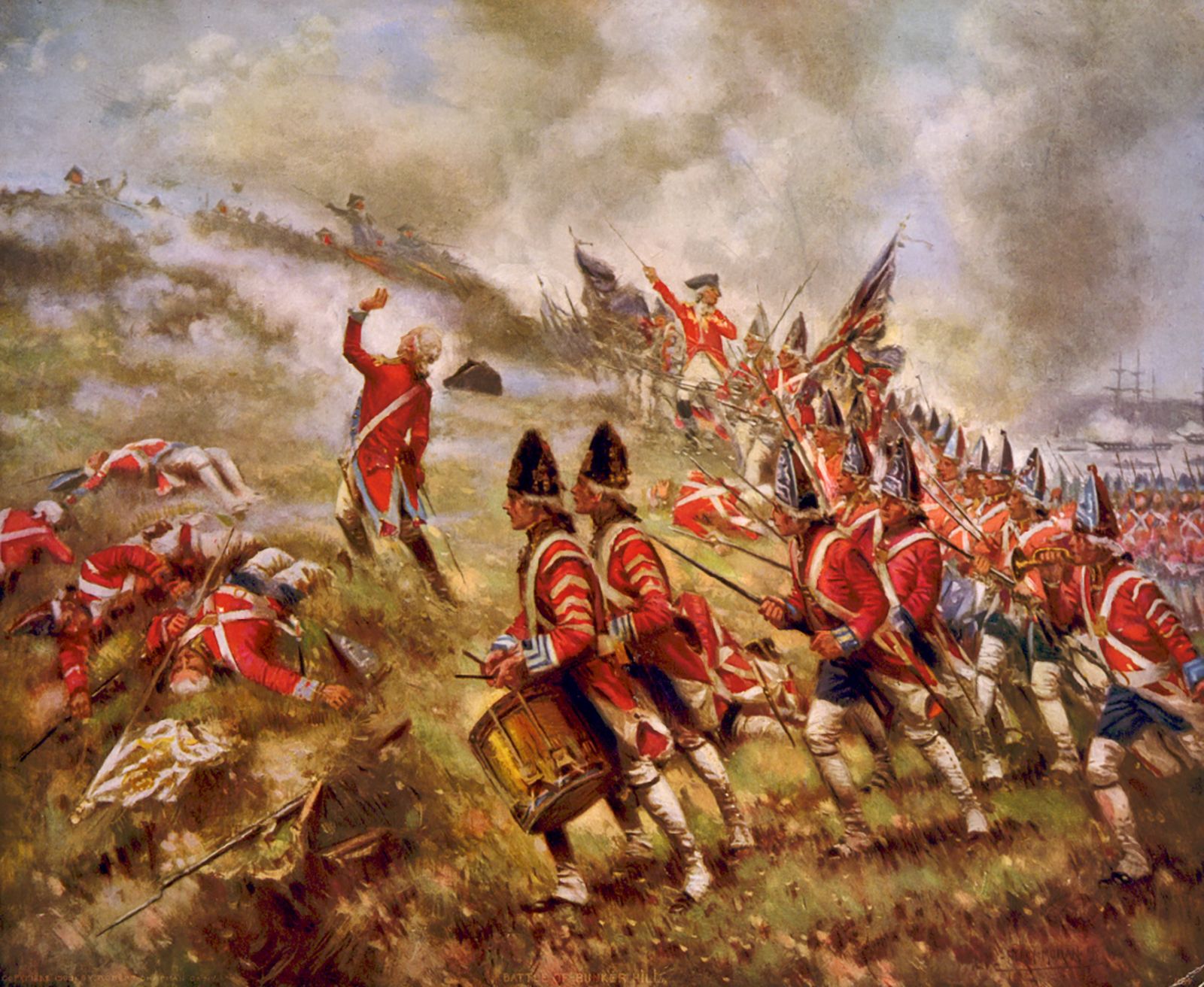shanneba
Professional
British General Thomas Gage lands his troops on the Charlestown Peninsula overlooking Boston, Massachusetts, and leads them against Breed’s Hill, a fortified American position just below Bunker Hill.
Although the British eventually won the battle, it was a Pyrrhic victory that lent considerable encouragement to the revolutionary cause.
On the evening of June 16 about 800 Massachusetts and 200 Connecticut troops, under the command of Col. William Prescott of Massachusetts, were detached to carry out the project. By some error, never explained, Prescott fortified Breed’s Hill, which, though nearer Boston than Bunker’s, not only was lower but could be more easily surrounded by the British. Prescott and his men had completed a redoubt (dirt fort) on the top of Breed’s Hill (now commonly called Bunker Hill) by the time they were discovered by the British at daybreak on the 17th.

 www.britannica.com
www.britannica.com
Although the British eventually won the battle, it was a Pyrrhic victory that lent considerable encouragement to the revolutionary cause.
On the evening of June 16 about 800 Massachusetts and 200 Connecticut troops, under the command of Col. William Prescott of Massachusetts, were detached to carry out the project. By some error, never explained, Prescott fortified Breed’s Hill, which, though nearer Boston than Bunker’s, not only was lower but could be more easily surrounded by the British. Prescott and his men had completed a redoubt (dirt fort) on the top of Breed’s Hill (now commonly called Bunker Hill) by the time they were discovered by the British at daybreak on the 17th.

Battle of Bunker Hill | Facts, Map, Summary, & Significance | Britannica
Battle of Bunker Hill (June 17, 1775), first major battle of the American Revolution, fought in Charlestown (now part of Boston) during the Siege of Boston. Although the British eventually won the battle, it was a Pyrrhic victory that lent considerable encouragement to the revolutionary cause.
